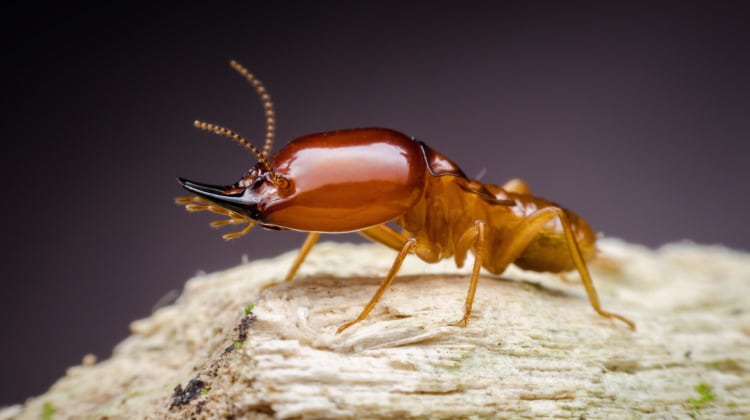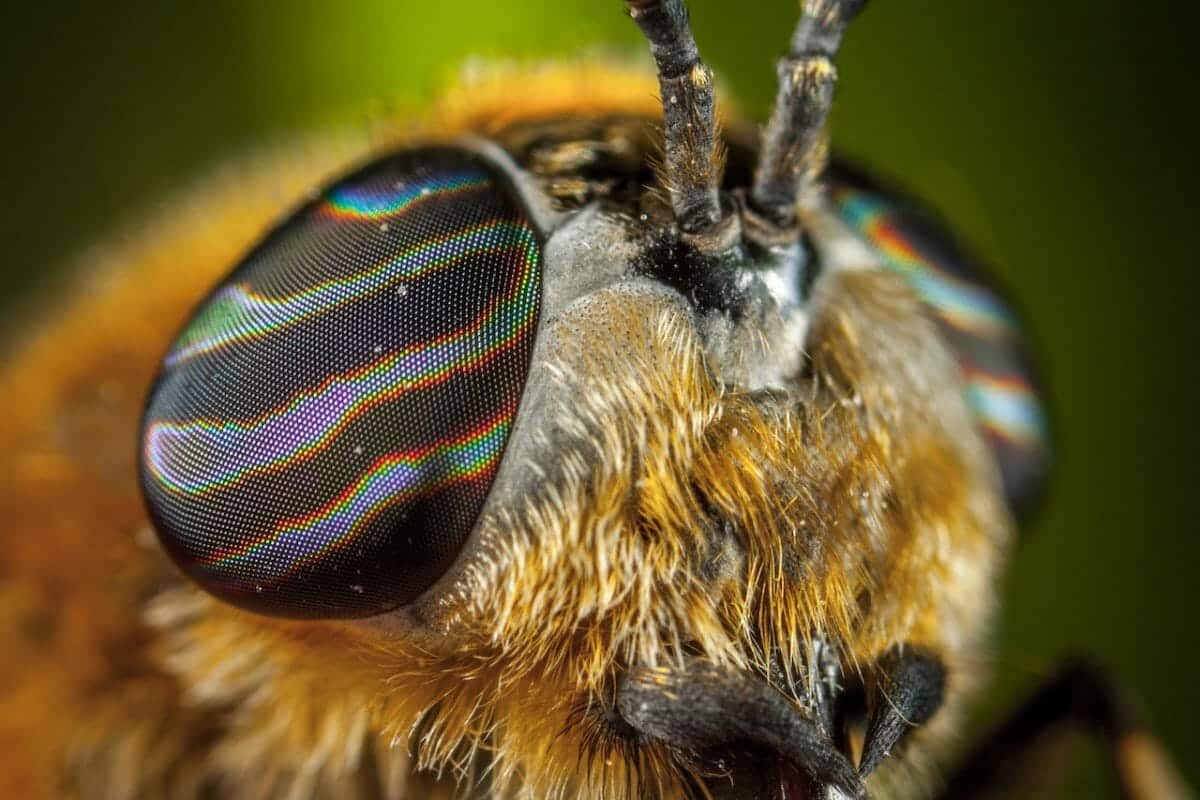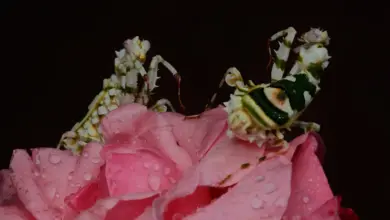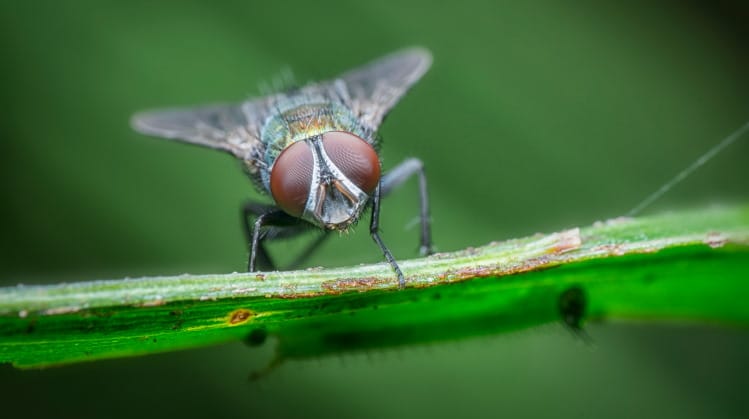How Many Legs Do Insects Have?
[modified-date]
[social-share]
With over 1.1 million invertebrate species described by science, it can become hard to classify them all.
Some invertebrates are mollusks. Some invertebrates are arachnids. Some invertebrates are insects.
So how do we know how many legs insects have?
For starters, an insect will always have six legs.
What Is An Insect?
To be considered an insect, an animal must have:
- Six legs
- An exoskeleton
- One pair of antennae
- Three body segments (head, thorax, and abdomen)
Insects or social insects include beetles, ants, bees, wasps, and true bugs.
Spiders are one of the members of phylum arthropoda, spiders are not insects. They have 8 legs and two body segments.
Centipedes and millipedes are also not insects. They can have hundreds of jointed legs and many body segment.
Do All Insects Have Six Legs?
The short answer is yes. All insects have 6 legs.

However, insects go through periods of morphological and physical changes. This is known as metamorphosis.
There are two types of metamorphosis: incomplete metamorphosis and complete metamorphosis.
Insects, such as grasshoppers and cockroaches, go through incomplete metamorphosis. Newly hatched instars resemble mini-adults. These insects have 6 legs throughout their entire lives.
Insects, especially those in the order Hymenoptera (ants, bees, and wasps) and Lepidoptera (butterflies and moths), go through complete metamorphosis. As the name suggests, these insects undergo a complete physical and morphological change.
Related articles:
- Difference between bugs and insects
- Do Insects Feel Pain?
- Insects with stingers with wings
- Difference between insects stages and mammals
- Why Do Insects Need To Taste?
- Do insects have tails? Everything You Need to Know
The developing young of insects undergoing complete metamorphosis look considerably different from the mature adult form of the insect. The number of legs these insects have may differ over their lifetime but will always remain at 6 during their adult life.
Take caterpillars for example. Caterpillars are the worm-like larva of moths and butterflies.
Caterpillars have small structures known as prolegs, extending from their thorax. Some species of caterpillar can have two pairs of prolegs. Other species can have as many as five pairs.
Unlike conventional mammalian legs, they do not use these prolegs to move around. Instead, they are used as anchors that hold the caterpillar in place whilst the body muscles contract, ultimately propelling the caterpillar forward.
During the pupal stage, the caterpillar will lose these prolegs and gain 6 official legs.
Why Do Insects Have Six Legs?
The evolution of insects has occurred over millions of years.

It is hypothesized that all extant insects evolved from a many-legged ancestor, millions of years ago.
Over time, selection pressures acted upon insects and concluded that 6 legs are the optimal number for an insects body to have.
But why?
In 1951, an important study by Urless Lanham, investigated insect locomotion and the optimization of 6 legs.
This led him to propose the hypothesis of the tripod gait.
Now, things get technical. Subheading worthy? I think so.
The Tripod Gait
One of the defining characteristics of an insect is its rigid exoskeleton. Exoskeletons are hard skeleton-like structures on the exterior of the insects body; perfect for protection.
But, with permanent, rigid armor, it can be hard to move.
Insects that evolved fewer than 6 legs were actively selected against, as they could not efficiently move to find mates or food.
With the use of 6 legs, insects could lift two outer legs on the same side and one middle leg on the opposite side. This creates a tripod-like stature and increases the stability of their fixed armor.
So, why don’t all animals have 6 legs?
In larger animals, especially vertebrates, the vestibular system provides information about body motions that are sent to the brain. They do not need to have a tripod-like position for stability, as they can quickly adjust any imbalances.
Did you Know?
The vestibular system lays in the inner ear and is essential for movement and balance. It can be found, in varying degrees of complexity, in most vertebrate orders.
Insects use the tripod gait hypothesis to prevent imbalance altogether, rather than trying to adjust instability.

Conclusion
All insects, whether they undergo complete or incomplete metamorphosis, have 6 legs in their adult form.
Insects that undergo complete metamorphosis do not resemble the adult form and may have more or less than 6 legs.
By possessing 6 legs, adult insects are able to stabilize their rigid exoskeleton, and move without toppling over.
References
- National Library of medicine, Aug 2014
- Science, Chapter, Jun 1951

Jack is a zoologist and author from the UK. After graduating from university, he moved to Costa Rica to study sea turtle nesting behavior. He quickly fell in love with the country and soon began to work at a rescue center for native Costa Rican wildlife. He specializes in human-wildlife conflicts and how humans can sustainably coexist with nature. He has rescued and raised orphaned monkeys, sloths, and coatis.
Disclaimer
Earthlife.net does not provide medical advice. We do our best to help users understand the science behind living beings; however, the content in the articles and on the website is not intended to substitute for consultation with a qualified expert. By interacting with the website and/or our email service, you agree to our disclaimer. Remember that you must consult a specialist before using any of the products or advice on the web.





